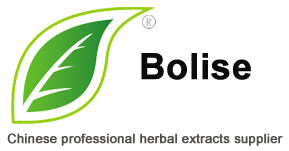Old man's beard lichen health Benefits
Botanical Name: Usnea spp. Many similarly used species
Common Names: Old Man’s Beard, Seaweed of the Mountain (Hawai’i), Fish Bone Beard Lichen, Tree Dandruff, Woman’s Long Hair
Family: Usneaceae
Parts Used: Whole Lichen
Lichenology & Identification:
An algae and a fungus have a symbiosis---Lichen. Photosynthesis occurs to the algae, which produces food for the organism. Among them, the fungal structure supports the algae and prevents it drying out. There are more than 600 species in the Usnea, and many of them are used for medical purposes. It is a Fruticose or ‘shrubby’ lichen growing on birches (Betula pendula), coniferous trees and fruit trees in the Northern Hemisphere.
An essential identification of Usnea is its elasticity — the exterior fungal layer easily falls off while its core keeps intergrated — the ‘stretchy knicker elastic’ test. Other species can be confused with Usnea, like Bryoria, don't have such a quality.
Edibility & Nutrition: Though Usnea is edible, it can't be taken in large amounts due to its function of irritating the gut. There is no record about using it as food for human beings, though it is often eaten by wild animals. Lichens has quite low-content protein and high-content carbohydrates.
Medicinal Actions: Antibacterial, Antibiotic, Anti-Fungal, Anti-Parasitic, Anti-Septic, Bitter, Vulnerary, Immune Tonic.
Uses: Usnea can be used for any infection inside or outside the body, including gram positive bacteria, fungus,protozoa (trichomonads), or yeast” (de la Floret).
Anti-Infective
Usnic acid is a broad-spectrum antibiotic. It's more effective than penicillin to fight against some bacterial strains. Usnea can inhibit gram positive bacteria such as Streptococcus, Staphylococcus, Mycobacterium tuberculosis and other fast growing species. However, it cannot restrain gram negative bacteria inhabiting in the digestive tract, like Salmonella and E.coli. This means its less destructive impact on our body ecology and gut flora than broad-spectrum antibiotic drugs. It aims to disrupt the cellular metabolism of bacteria, stops the formation of ATP from ADP. This destructive mechanism won't affect human cells (Hobbs).
Its synergism with the antibiotic clarithromycin can increase its effectiveness as an antibiotic. (Buhner, in de la Floret)
It is widely used to rebalance bacteria and eradicate infection in the mucosa. It can influence the lungs and bladder (Rose) in the strongest and quickest way. It is also useful to treat strep throat, tuberculosis, pneumonia, upper respiratory tract infections, urinary tract infections, and diarrhoea (de la Floret)
As an antiviral, Usnea inhibits Epstein-Barr virus activation and the Herpes simplex virus.
Usnea is anti-fungal, so it can be used to effectively cure Candida, athlete’s foot, jock itch, dandruff, ringworm, vaginal infections etc. (de la Floret)

 Asia Bio-Pharmaceutical Research Institute
Asia Bio-Pharmaceutical Research Institute Bolise Co., Ltd.
Bolise Co., Ltd.

